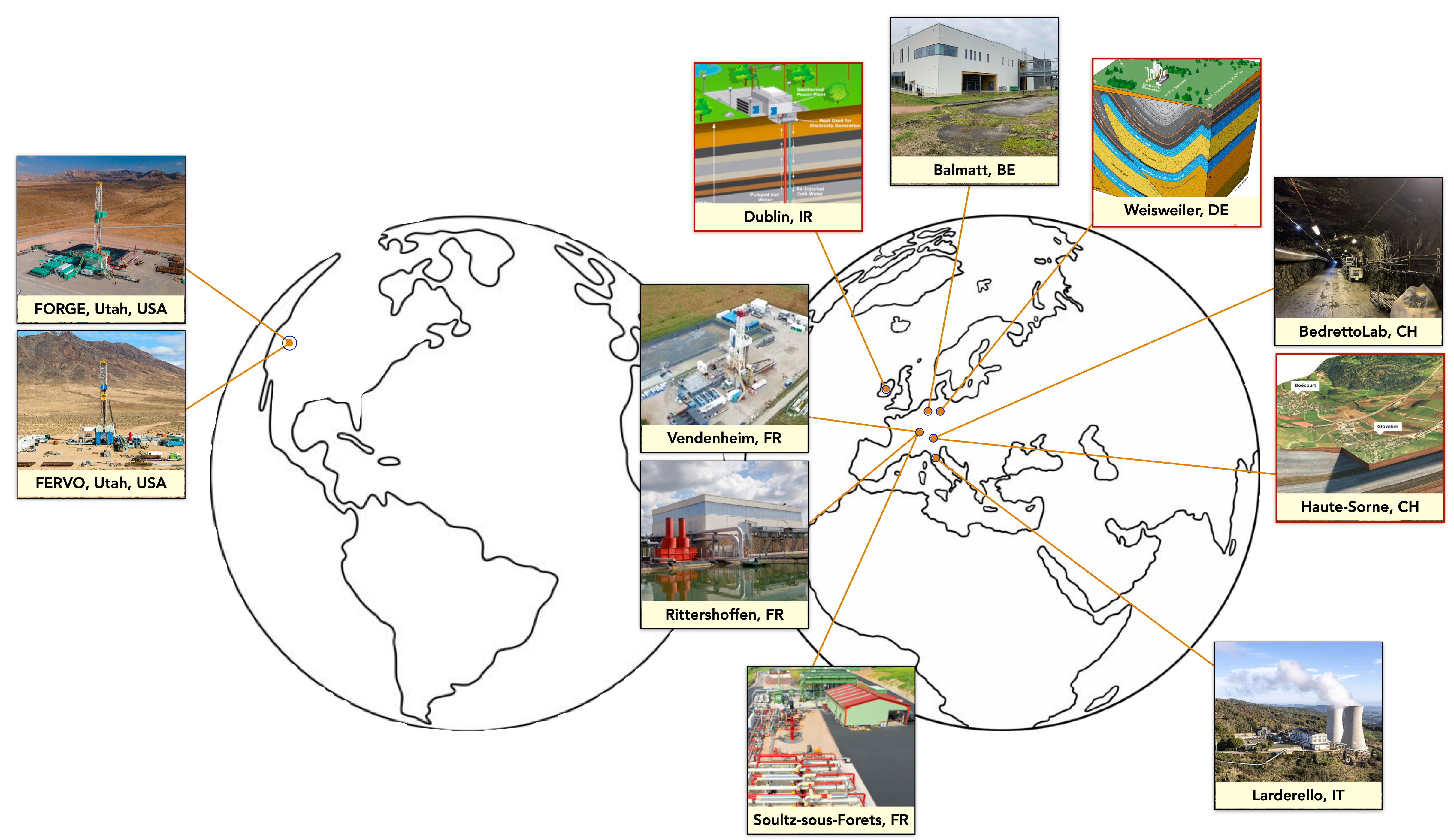Digital Twin Components for Deep Geothermal Energy Power and Heat Generation (GEOTWINS)
Deep geothermal energy (DGE) holds promise to become a widespread and abundant energy source for heating and power, representing a key technology in the transition to climate neutrality by 2050. However, its global adoption faces challenges due to closely interrelated concerns about induced earthquakes, decreasing societal acceptance and economic viability due to inadequate production rates and high costs. Digital Twins (DTs) offer an innovative solution to optimize and de-risk deep geothermal energy generation. DTs can provide a detailed understanding of fluid flow, heat transfer, safety, and economic performance of subsurface geothermal reservoirs. Moreover, DTs can be used consistently throughout all project phases and for a wide range of purposes (reservoir planning, network planning, permitting, insurance, adaptive traffic light systems, visualization, etc.). GEOTWINS focuses on building a new state-of-the-art modular geothermal DT, that would enable companies to predict the performance of geothermal wells, optimize their operations, reduce the risks linked to drilling, exploration, stimulation and operation, and enhance societal acceptance.
GEOTWINS ambitions
GEOTWINS ambitions span multiple scales (from laboratory to full-scale systems at operational or soon-to-be operational test sites) to provide for each physical process/component of a geothermal system, digital replicas that are interconnected, scalable and transferrable. Our work packages are designed to offer modular DTCs that would allow for the optimization of different key aspects of geothermal operations.
- Seismic monitoring techniques: DTs are ideally suited to integrate emerging machine learning (ML) methods that allow for faster, more accurate and robust earthquake source parameter estimation. Learn more about this here: Work Package 1
- Seismic wave propagation models: GEOTWINS will focus on developing time-lapse full-waveform imaging workflows to investigate the geophysical detection and quantification of fault and reservoir changes. Learn more about this here: Work Package 1.
- Geomechanical reservoir models: GEOTWINS will create an ensemble 3D physics-based digital twin that can be utilized for the simulation of the behavior of the system at different phases of a geothermal project, providing insights into the physical interpretation of the geothermal reservoir evolution over its operational lifespan. Learn more about this here: Work Package 2.
- Nuisance, hazards, and vulnerability models: GEOTWINS proposes to fill the current knowledge gap in de-risking approaches through the design of pre-project risk assessment protocols, and, at any stage of the project, continuous estimates of real-time and prospective damage, losses, and nuisance. Learn more about this here: Work Package 3.
- Public information products: GEOTWINS will develop and test visualization and decision-making tools to foster knowledge transfer and public acceptance. Learn more about this here: Work Package 4.

GEOTWINS demonstration sites
More about the demonstration sites:
- Utah FORGE (Utah, USA)
- Cape Modern (Utah, USA)
- Haute-Sorne (Switzerland)
- Bedretto Lab (Switzerland)
- Strasbourg sites(France)
- Balmatt (Belgium)
- Lower Rhine Embayment sites (Germany)
- Dublin (Ireland)
- Larderello (Italy)

